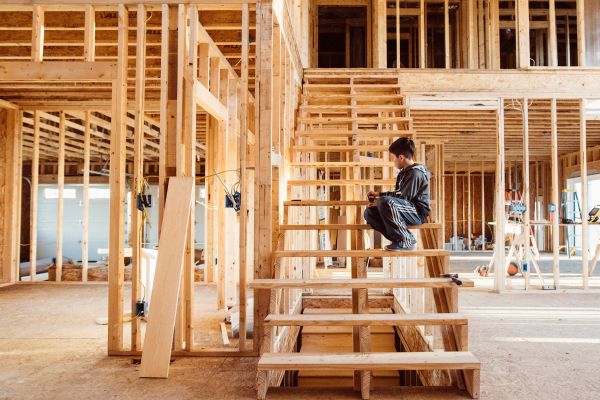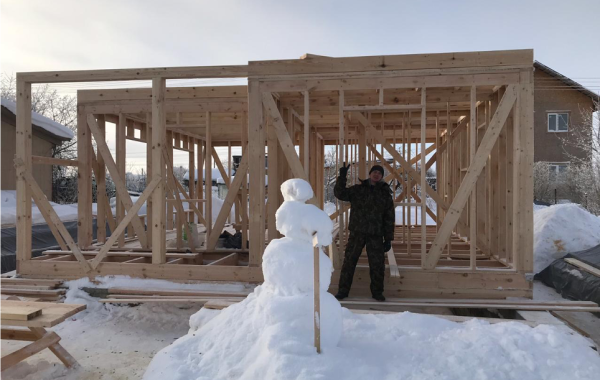
The Art and Science of Building Structures with Carpentry
Carpentry, an age-old craft that weaves together tradition and innovation, has left an indelible mark on human history. From ancient wooden beams to sleek, modern designs, carpentry has shaped our built environment. In this exploration of the art and science of building structures with carpentry, we delve into the craft’s rich historical tapestry, essential techniques, and its enduring relevance in the contemporary world. We will examine the role of carpenters in the construction process, from traditional techniques to the latest technological advancements. We will also explore the contributions of carpenters to society, from creating works of art to building sustainable, affordable homes. Finally, we will discuss the future of carpentry and its potential to create a brighter future.
I. Carpentry’s History
Carpentry’s roots reach deep into civilization. Ancient craftsmen, armed with rudimentary tools, crafted wooden marvels that stood the test of time. Ancient Egypt’s wooden structures, including the iconic pyramids, and medieval Europe’s intricate timber-framed buildings showcase carpentry’s enduring legacy. As societies evolved, so did carpentry, adapting to cultural shifts, technological advancements, and architectural innovations. Modern carpentry has evolved into a comprehensive profession, with specialized tools and materials available for creating everything from custom homes to large commercial buildings. It is now an invaluable part of the construction industry and an essential skill for many homeowners and other professionals.
II. Essential Carpentry Techniques:
- Framing: At the heart of every structure lies framing—a craft that involves constructing the skeletal framework that provides stability and support. From traditional timber framing to modern platform framing, carpenters employ various techniques to create the backbone of a building. The frame of a building must be carefully planned and constructed to ensure stability, safety, and efficiency. Carpenters must also consider factors such as the size of the building, the slope of the roof, and the type of flooring material.
- Joinery: The meticulous art of joinery tests a carpenter’s skill. Dovetail joints, mortise and tenon joints, and lap joints are just a few examples of the precision techniques employed to create strong and durable connections between wooden components. Joinery is essential for creating furniture, cabinetry, and other wooden structures. It is a critical part of the carpentry trade and plays an important role in preserving the structural integrity of wooden objects. Joinery is a craft that dates back centuries and continues to be practiced today.
- Finishing: Carpentry extends beyond the structural to the aesthetic. Finishing touches such as sanding, staining, and sealing protect the wood from the elements but also enhance its natural beauty. This turns a simple structure into a work of art. The finishing process requires attention to detail, skill, and experience. It is also important to choose the correct materials to ensure the finish is long-lasting. Once completed, a well-executed finish can be the difference between a good project and a great one.
III. Modern Carpentry and Sustainable Practices:
In the 21st century, carpentry embraces technological advancements and sustainability. Computer-aided design (CAD) software allows for precise planning and execution, while engineered wood products, such as laminated veneer lumber (LVL) and cross-laminated timber (CLT), provide enhanced strength and stability. In addition, sustainable practices such as the use of reclaimed wood and the use of renewable materials are becoming more popular.
- Green Building Materials: Sustainable construction practices have spurred eco-friendly carpentry materials. Engineered wood, reclaimed timber, and bamboo are not only environmentally conscious choices but also exhibit qualities that contribute to structure longevity and resilience. These materials are also cost-effective and can reduce construction waste. Additionally, they can provide a unique aesthetic to any project.
- Energy-Efficient Design: Carpenters today are at the forefront of energy-efficient structures. From designing well-insulated homes to creating load-bearing structures optimized for energy conservation, modern carpentry plays a pivotal role in constructing buildings that align with environmental sustainability goals. This helps to reduce energy costs, improve indoor air quality, and increase the overall sustainability of a building. Additionally, energy-efficient carpentry also helps to reduce carbon emissions, which is a major cause of climate change.
IV.Challenges and Innovations in Carpentry:
As carpentry faces contemporary challenges, innovative solutions are needed to propel the craft forward. One potential solution is to use sustainable materials and construction methods, such as reclaimed wood and energy-efficient windows. Another is to develop more efficient and automated tools to reduce labor costs and increase efficiency. Finally, carpentry must stay up to date with current trends in green building and energy efficiency.
- Digital Tools and Robotics: The integration of digital tools and robotics has revolutionized precision and efficiency in carpentry. Automated cutting machines, CNC routers, and 3D modeling software enable carpenters to achieve intricate designs with unparalleled accuracy. Robotic sanders, saws, and drills are now commonplace in carpentry shops, allowing for faster production and improved safety. Digital tools have also made it easier for carpenters to measure and calculate dimensions, as well as to create plans for projects.
- Skill Development and Education: In response to the evolving industry landscape, the emphasis on skill development and education has grown. Vocational training programs, apprenticeships, and educational initiatives empower aspiring carpenters with the expertise needed to navigate modern construction complexities. This encourages carpenters to stay up to date with the latest technologies, methods, and techniques. Moreover, it also provides carpenters with the necessary qualifications to pursue their careers successfully.
Conclusion:
Carpentry, a living testament to human ingenuity, shapes the world. From time-honored techniques passed down through generations to cutting-edge technologies, carpentry remains a dynamic force in construction. As we navigate the challenges of the present and future, carpenters, armed with skill and innovation, will continue to craft structures that stand not only as physical edifices. They will also stand as enduring symbols of craftsmanship and resilience. Carpentry is an essential craft that will continue to be used by future generations. It is a craft that is rooted in history yet continues to innovate and adapt to changing times. It is an invaluable part of our world.



